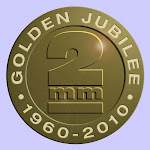Developing the theory to practise and consistency has taken some hours, however, I am confident that for a small shunting layout which "Willit End" is I have a working system.
I have used the Association coupling hooks from etch 2-345, to this two links constructed from anodised copper wire of 0.315 mm diameter are attached then a third link in black iron.

A coupling hook is fashioned from black iron to the same profile as the Association hook, passed through a back plate from etch 2-345 and then through the buffer beam.
A number of disc magnets are glued behind the buffer beam and are in contact with the black iron hook, an additional disc magnet of finer profile it attached to the previously profiled hook outline.

In development I found that the number of and location of magnets behind the beam varied depending upon the thickness and material the beam is constructed from. Plastic/Resin/Multi etch beams have been treated equally, single thickness etched beams require fewer magnets and these are set back from the beam.
 I have a rake of five wagons working and know that at least six wagons can be coupled this way which is the maximum I could shunt on my layout.
I have a rake of five wagons working and know that at least six wagons can be coupled this way which is the maximum I could shunt on my layout.

At the time of this posting I am building a test rig to decouple wagons, in principle this will be a rod rising from below the board to interface with an axle.
In a similar vein on my 4 wheel coach stock I have used black iron wire to represent brakes pipes on one end with magnets on the other, the advantage of this over the staple method is that you do not have to lift stock to separate.


.jpg)
3 comments:
Stuart, its looking good I hope you will bring the wagons along to DEAG on Thursday so we can have a play.
Hi all this site blog is very nice I demonstrated at our meeting the principle of using a magnet to attract a link chain.
Greatt reading this
Post a Comment